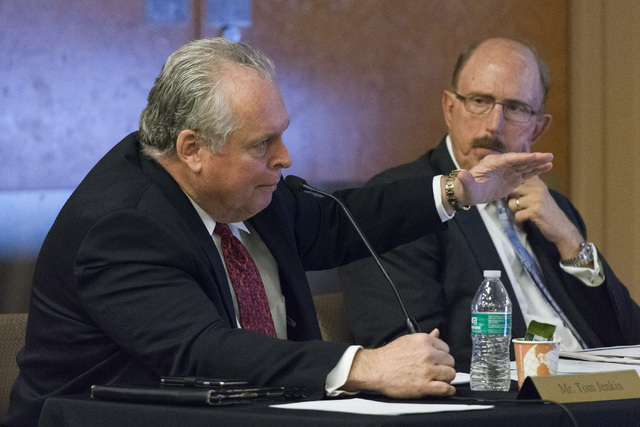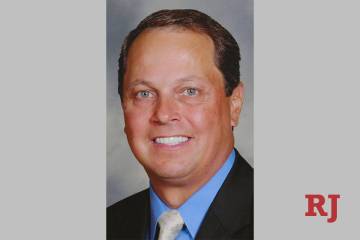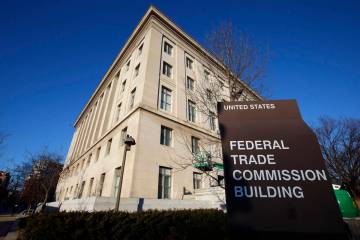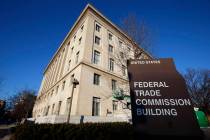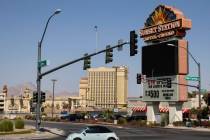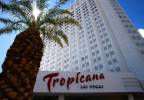New financing plan for Las Vegas domed stadium gets tepid response
A new financing plan that reduces public funding for a $1.4 billion domed stadium from $700 million to $550 million received a lackluster response Thursday from the Southern Nevada Tourism Infrastructure Committee.
The stadium’s development partners, Las Vegas Sands Corp., Majestic Realty and the Oakland Raiders, also seemed wary of the revised plan, noting they got their first look at it late Wednesday afternoon. The NFL’s Raiders have vowed to seek relocation from Oakland to Las Vegas if the stadium is approved.
The cool response to the plan, unveiled by committee Chairman Steve Hill and financial analyst Jeremy Aguero, and the committee’s lack of progress on the proposal Thursday puts additional pressure on the panel to deliver a recommendation to Gov. Brian Sandoval and state lawmakers by the end of July. The committee also must formalize a recommendation on funding for the expansion of the Las Vegas Convention Center within a month.
The recommendations of the 11-member committee are nonbinding. They’re intended to reflect a consensus of the gaming industry and local government bodies and accelerate the drafting of legislation needed to finalize financing for projects that support the valley’s tourism economy.
“I really don’t think we’re that far apart,” Hill said of the stadium plan before Thursday’s meeting ended.
But Hill also acknowledged that a lot of work must be done before the committee’s next meeting July 11, because committee members must follow the state’s open meeting law and can’t meet as a group before then.
There were several differences between the development proposal submitted by Sands and Majestic and the one outlined by Aguero, an analyst with Las Vegas-based Applied Analysis working on behalf of the committee.
* The estimated cost of the project grew from $1.4 billion to $1.45 billion. An extra $50 million was added for land, assuming that 42 acres at Tropicana Avenue and Koval Lane owned by UNLV would not be used for the stadium.
* Public funding would drop from $700 million to $550 million; private funding would climb from $650 million to $900 million, with $400 million coming from Sands and Majestic and $500 million from the Raiders.
* The Sands-Majestic proposal to increase the hotel room tax by 1 percentage point would be modified to add 0.7 percentage points to properties in the resort corridor, 0.5 percentage points to non-Strip resorts, including downtown properties, and no increase to properties more than 25 miles from the stadium site.
* The new tax revenue would be controlled by a seven-member stadium authority board, which would spend it in six ways: $27.5 million annually on construction debt payments; $2 million on stadium operational costs; $5 million for a stadium capital improvement fund; $3.5 million to UNLV to compensate the university for lost revenue at Sam Boyd Stadium, which would lose special events and Rebel football games to the dome; $4 million to the Metropolitan Police Department to add officers on the Strip; and whatever money is left would support a Clark County event fund.
* The seven-member stadium authority board would include three members appointed by the governor, two approved by Sands and Majestic and two from the Clark County Commission.
* Revenue generated by a tax increment district would be used to attract major events to the stadium in addition to Raiders and UNLV football games. The tax increment district would include the stadium and a Raiders practice facility and would divert all sales taxes, live entertainment taxes and modified business taxes on payrolls at those locations.
* The board would require the Raiders to sign a 30-year lease with two five-year extension options, with a minimum annual team lease of $2.5 million.
* The proposal also includes an option to build a smaller stadium for UNLV if the Raiders cannot relocate to Las Vegas. The Raiders would have 18 months from the approval of the agreement to gain NFL approval for relocation, after which UNLV would have 24 months to raise $200 million to utilize the room-tax funding. Room tax revenue collections would start as soon as an agreement is approved.
Committee member Steve Sisolak, chairman of the Clark County Commission, criticized Hill and Aguero for developing the proposal without input from other committee members. Sisolak also criticized the proposal for suggesting only $4 million a year for Metro. Sheriff Joe Lombardo testified before the committee that he would need at least $12 million a year to have enough officers to ensure safety on the Strip. Lombardo said he was embarrassed by the lack of commitment to police protection, particularly after high-profile terrorist attacks in San Bernardino, California, and Orlando, Florida.
Committee members and the developers briefly discussed potential sites for the stadium, and four remain at the forefront: the 42 acres at Tropicana and Koval; the site of the former Riviera, acquired by the Las Vegas Convention and Visitors Authority; MGM Resorts International’s Rock in Rio festival site at Las Vegas Boulevard and Sahara Avenue; and Cashman Center in downtown Las Vegas, owned by the city of Las Vegas.
In testimony before the committee, it was clear none of the parties have met with each other to seriously discuss site options. Committee member Bill Hornbuckle, an MGM Resorts executive, invited representatives of Sands and Majestic to discuss the Rock in Rio site.
Prior to the stadium discussion, the committee showed its first signs of division, splitting 5-5 on how much power should be given to a panel that would oversee the $1.4 billion convention center expansion. The 11-member committee deadlocked because of the absence of Wynn Resorts representative Kim Sinatra. Because of the tie vote, the committee will revisit the structure of the oversight panel at its next meeting.
The committee also voted unanimously to recommend the Legislature conduct a study on developing additional fuel sources for McCarran. Southern Nevada currently relies on a 550-mile pipeline that originates in Colton, California, as its sole source of aviation fuel.
The Review-Journal is owned by the family of Las Vegas Sands Chairman and CEO Sheldon Adelson.
Contact Richard N. Velotta at rvelotta@reviewjournal.com or 702-477-3893. Find him on Twitter: @RickVelotta
RELATED
Tourism committee backs room tax increase for convention center upgrades












